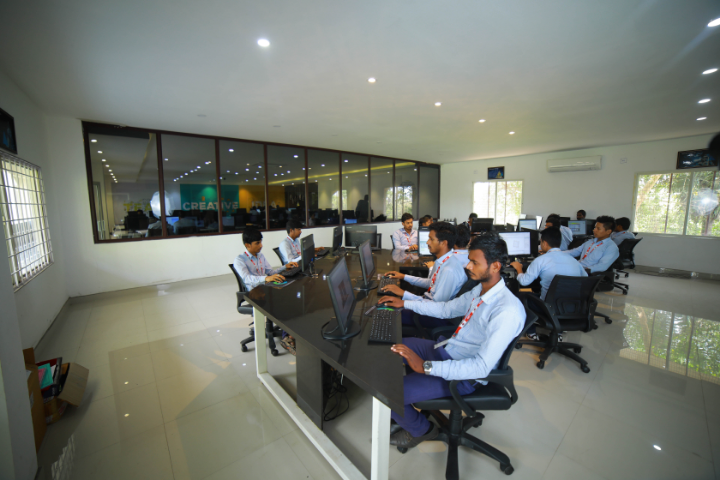Department Profile
Overview
- The department has well qualified and committed faculty members who strive continuously to provide the best quality educational experience to the students. The department aspires to excel in all its endeavours and promotes a healthy and pleasant atmosphere where minds are challenged, ideas thrive and innovation is encouraged.
- The students are given an opportunity to choose from various option modules in the fields of application such as IoT, Embedded Systems, Networking, Communication, Control Systems, Microwave and Antenna, Basic Electronics and Signal & Image Processing.
Genesis
The Department of ECE was started in the year 1998 and has been known for its exceptionally strong Under-Graduate and Postgraduate programs.
Electronics & Communication Engineering department offers
- Undergraduate (UG) program i.e B.Tech ( Electronics & Communication Engineering – ECE)
- Postgraduate (PG) program i.e M.Tech (VLSI & Embedded Systems).
At present, the Department offers B.Tech (ECE) with an intake of 180 and M.Tech (VLSI & Embedded Systems) with an intake of 12.
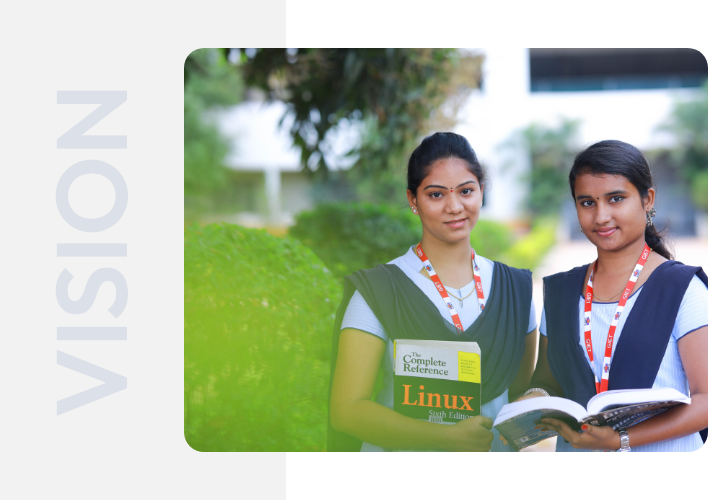
Our Vision
To establish a School of Electronics Centre of Excellence and to become a pioneer in higher learning and research to produce creative solutions to societal needs.
Our Mission
- Establish a unique learning environment to enable the students to face the challenges in Electronics and Communication Engineering field.
- Promote the establishment of centre of excellence in niche technology areas to nurture the spirit of innovation and creativity among faculty and students.
- Provide ethical and value-based education by promoting activities addressing the social needs
- Help the students to develop skills to solve complex, technological problems through innovative and group work excercise that enhance the entrepreneur skills, employability and multidisciplinary activities.

Program Outcomes
After completion of the program, a successful graduate will be able to:
Program Outcomes
- Engineering Knowledge: Apply the knowledge of mathematics, science, engineering fundamentals, and an engineering specialization for the solution of complex engineering problems.
- Problem Analysis: Identify, formulate, research literature, and analyze complex engineering problems reaching substantiated conclusions using first principles of mathematics, natural sciences, and engineering sciences.
- Design/Development of Solutions: Design solutions for complex engineering problems and design system components or processes that meet the specified needs with appropriate consideration for public health and safety, and cultural, societal, and environmental considerations.
- Conduct Investigations of Complex Problems: Use research-based knowledge and research methods including design of experiments, analysis and interpretation of data, and synthesis of the information to provide valid conclusions.
- Modern Tool Usage: Create, select, and apply appropriate techniques, resources, and modern engineering and IT tools including prediction and modeling to complex engineering activities with an understanding of the limitations.
- The Engineer and Society: Apply reasoning informed by the contextual knowledge to assess societal, health, safety, legal, and cultural issues and the consequent responsibilities relevant to the professional engineering practice.
- Environment and Sustainability: Understand the impact of the professional engineering solutions in societal and environmental contexts, and demonstrate the knowledge of, and the need for sustainable development.
- Ethics: Apply ethical principles and commit to professional ethics and responsibilities and norms of the engineering practice.
- Individual and Team Work: Function effectively as an individual, and as a member or leader in diverse teams, and in multidisciplinary settings.
- Communication: Communicate effectively on complex engineering activities with the engineering community and with society at large, such as being able to comprehend and write effective reports and design documentation, make effective presentations, and give and receive clear instructions.
- Project Management and Finance: Demonstrate knowledge and understanding of the engineering and management principles and apply these to one’s work, as a member and leader in a team, to manage projects and in multidisciplinary environments.
- Life-long Learning: Recognize the need for, and have the preparation and ability to engage in independent and life-long learning in the broadest context of technological change.
Program Educational Objectives
Within a few years after the graduation, the graduates will be:
Program Educational Objectives
- To acquire a strong background in basic science and mathematics.
- To use modern tools in design and analysis of complex problems in electronics and communication engineering.
- To understand human, social, ethical and environmental context of their profession and contribute positively to the needs of individuals and society.
- To exhibit professionalism, communication skills, team work in their profession and adapt to current trends by engaging in lifelong learning.
Program Specific Outcomes
Within a few years after the graduation, the graduates will be:
Program Specific Outcomes
- Analyze and design analog and digital circuits or systems for a given specification and function.
- Implement functional blocks of hardware-software co-designs for signal processing and communication applications.
Our Courses
UG PROGRAM
4 YEARS
B.Tech - Electronics & Communication Engineering
Electronics & Communication Engineering Department
PG PROGRAM
2 YEARS
VLSI & Embedded Systems
Electronics & Communication Engineering Department
Head of Department

Dr. P. Venkatrao
Professor, Head – Dept. of ECE and Chairman-BoS
Infrastructure
For practical instruction in Electronics and Communication systems, labs provide cutting-edge hardware and software with fundamental electronics study tools including oscilloscopes, function generators, and multimeters. These labs have basic communication trainers and breadboards for circuit prototyping. Furthermore, fundamental software tools like as MATLAB and simulation software may be accessible for theoretical analysis and design.Students conduct hands-on experiments to get ready for real-world problems in wireless communication, signal processing, and VLSI design. The state-of-the-art facilities support research and innovation, preparing graduates for positions at the forefront of technology.
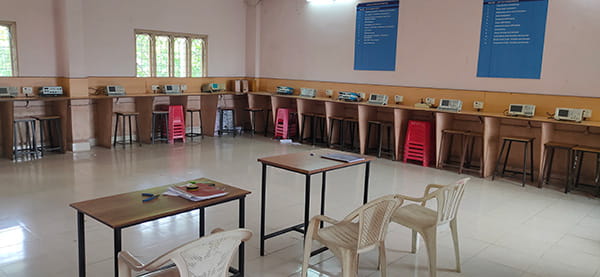
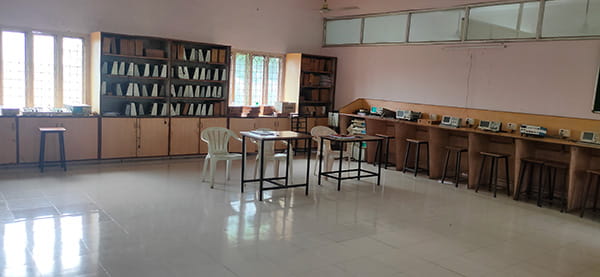
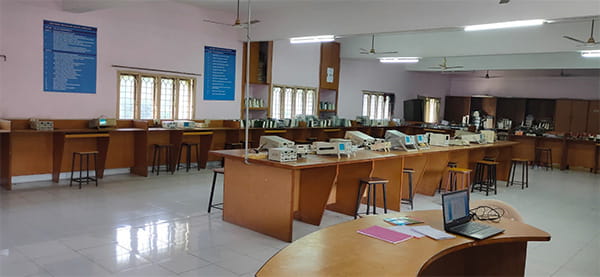
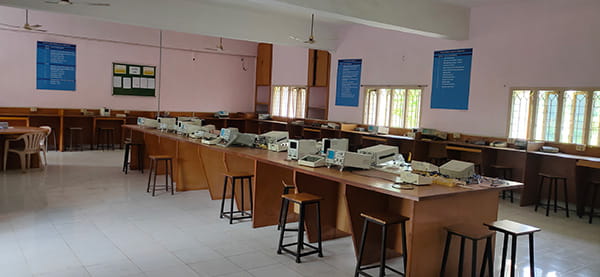
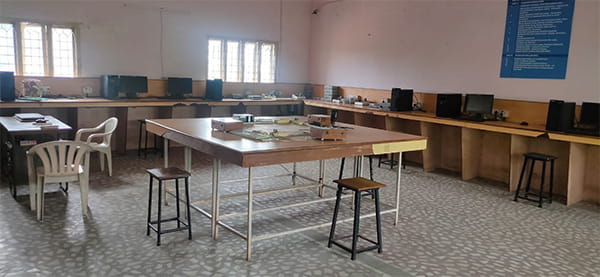
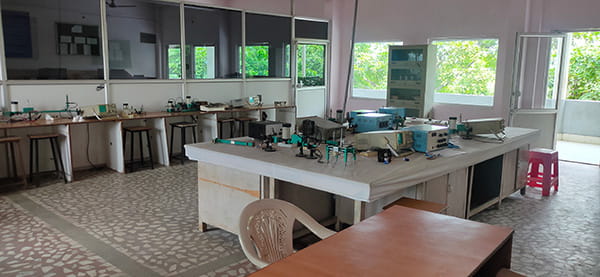
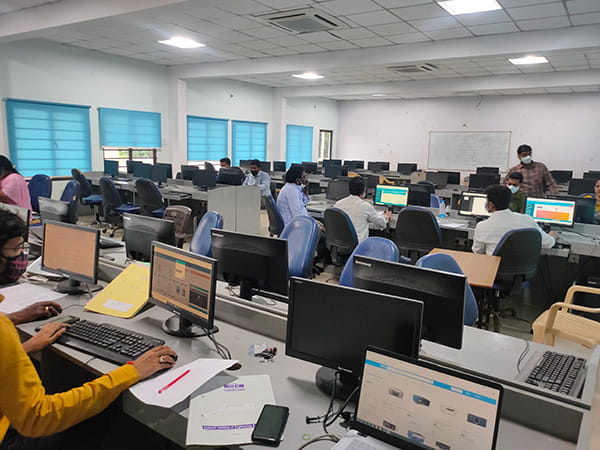
Research and Development
Centre of Excellence
Internet of Things (IoT)
The Internet of Things (IoT) is a course about the new paradigm of objects interacting with people, with information systems, and with other objects. The course will focus on creative thinking and on hands-on project development.
The Internet of Things (IoT) is a system of interrelated computing devices, mechanical and digital machines, objects, animals or people that are provided with unique identifiers (UIDs) and the ability to transfer data over a network without requiring human-to-human or human-to-computer interaction.

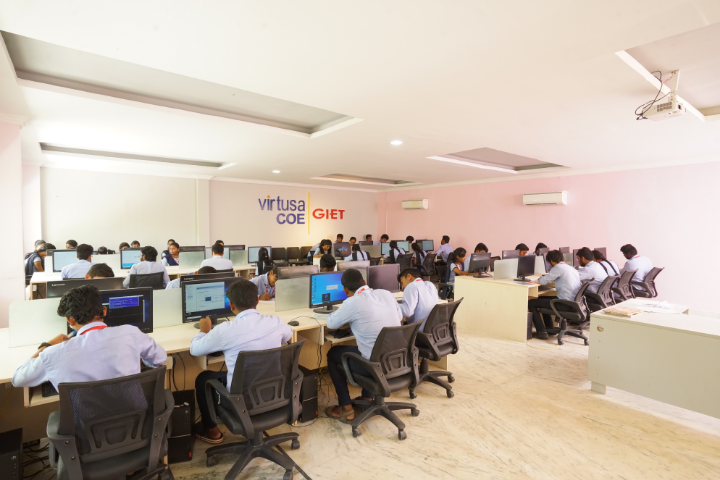
Functionality
- IOT is futuristic emerging area integrated with other technologies and current uses where IOT can be integrated to make a make a quantum jump in the efficiencies in application. A willingness to be creative and participate in open discussions is a must.
- The students are able to explain, apply IoT standards and protocols. The students can also apply these standards and protocols in different system architectures found in IoT systems. Additionally, they are able to separate application and protocol logic in the implementation of the IoT devices as well as the application logic of the systems.
Benefits
Students will be explored to the interconnection and integration of the physical world and the cyber space. They are also able to design & develop IOT Devices. The students will learn:
- IOT concepts
- IOT Standards
- Components of IOT System.
- IOT Applications.
- Challenges in IOT implementation.
- Projects (with Arduino Board and Rasperry pi)
- Relevance of IOT for the future.
